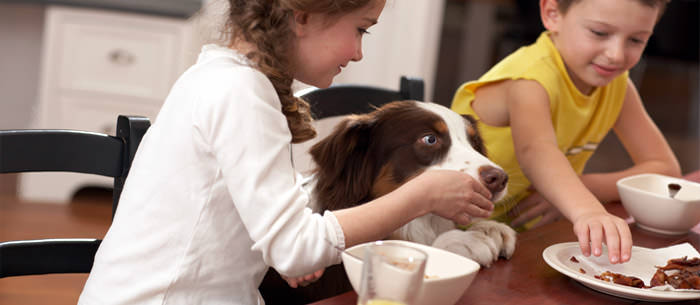While dogs are man’s best friend, we don’t always speak the same language. So when we humans give our pet dogs commands, sometimes they just don’t listen. Sometimes dog owners perceive these misunderstandings as discipline issues, rather than a problem with dog training.
We’ve identified some of the most common dog behaviour issues with training tips for dealing with them.
Jumping
Leash training is important, even inside; keep the leash on as the dog runs in the room so you can control them when needed. Keep your pooch on a leash when you’re expecting company or are out for walks. If the pup jumps, pull it down by the leash to modify the behaviour. Train with rewards, then gradually removing the reward as the behaviour is corrected.
Barking
The first pet dogs shared caves with no worry of behaviour issues, since their human counterparts lived in nature much as they did. The first dogs were wolves and did not bark. The savviest would make a low sound when they saw something to warn their human friends about. Barking evolved from humans teaching dogs to alert with a sound. Through evolution and breeding, these sounds grew into [the] barking that is innate in today’s dogs.
Dogs feel as if they are helping their owners when barking as they see people pass by a window. In the dog’s mind, he is chasing intruders away – so simply close the window shade.
Lack of Attention
Owners need to learn to be teachers all the time. Shape a dog as you would in nature. Do not ignore bad behaviour by rewarding only good behaviour. In other words, balance training is creating a balance between bad behaviour and good behaviour adapting for each particular dog.
Destroying Objects
Dogs are creatures of habit, so it is important to never give them the option to chew on an object that is not theirs. Dog proof your house. Don’t feed a dog from the table. Close closet doors and pick things you don’t want your dog chewing on off of the floor. Crate training your dog will also prevent him from destroying things while you’re out.
Dogs may also chew out of stress or lack of exercise. If your dog isn’t getting enough stimulation, he may be taking that excess energy out on your favourite pair of shoes. Take some extra time in the mornings to walk your pup a little further. If you come home to a chewed object, refrain from scolding. Your dog won’t be able to connect the scolding to earlier actions, and you’ll both end up frustrated.
Leash Pulling
Always direct your dog to sit and stay while putting on his leash, and don’t let him get too far ahead of you outside. You want to be leading the walk, not the other way around. Modifying behaviour is the key to curbing leash pulling.
Teach your dog to listen and learn through a reward system. Direct the dog to stop pulling on the leash by giving the pup a directive, followed by a reward for the proper behaviour. Behaviour training are directives, not commands, that have positive results for dogs. A dog will always do a behaviour when he or she knows that there will be benefits, such as treats, when directions are followed.
House Training
The dog’s natural instinct is to not go where they sleep. Pet owners have to act as the mother dog and teach pups the proper place to eliminate.
Crate training is a key component to house training. Teach the dog to perceive the entire house as a ‘sleeping den’ not to be soiled by beginning with crate training and gradually letting the dog move into the rest of the house.
It also helps to have your dog on a schedule as teaching a routine is key to house training.
Experts agree that dogs’ behaviours and actions are derived from biology. Everyone, including animals, has evolved into how they approach life. In order to cohabitate peacefully, it’s important to understand where their behaviour was born and how to work with them to maintain a harmonious relationship.
Find dog sitters and dog walkers on Care.com.
